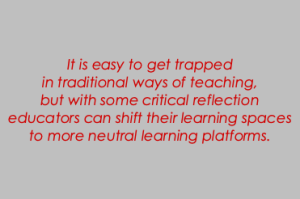By Christine Smart-Wiseman
I have spent over a decade developing my research in community-setting adult ESL classes. I have found the path to empowerment for newcomers somewhat difficult. Students face many obstacles, including discrimination, racism, and the increasing challenges of settling into a country where English is not their first language. I have also realized that my own positionality, as well as the positionalities presented in teaching materials, can compromise students’ abilities to relate and succeed. This means that my own ideas, and the ideas presented in ready-made materials, often reflect the status quo—not the typical adult ESL learner. So, what can we do about this in the classroom? There are two key ways educators can critically reflect on their teaching practices. Continue reading










